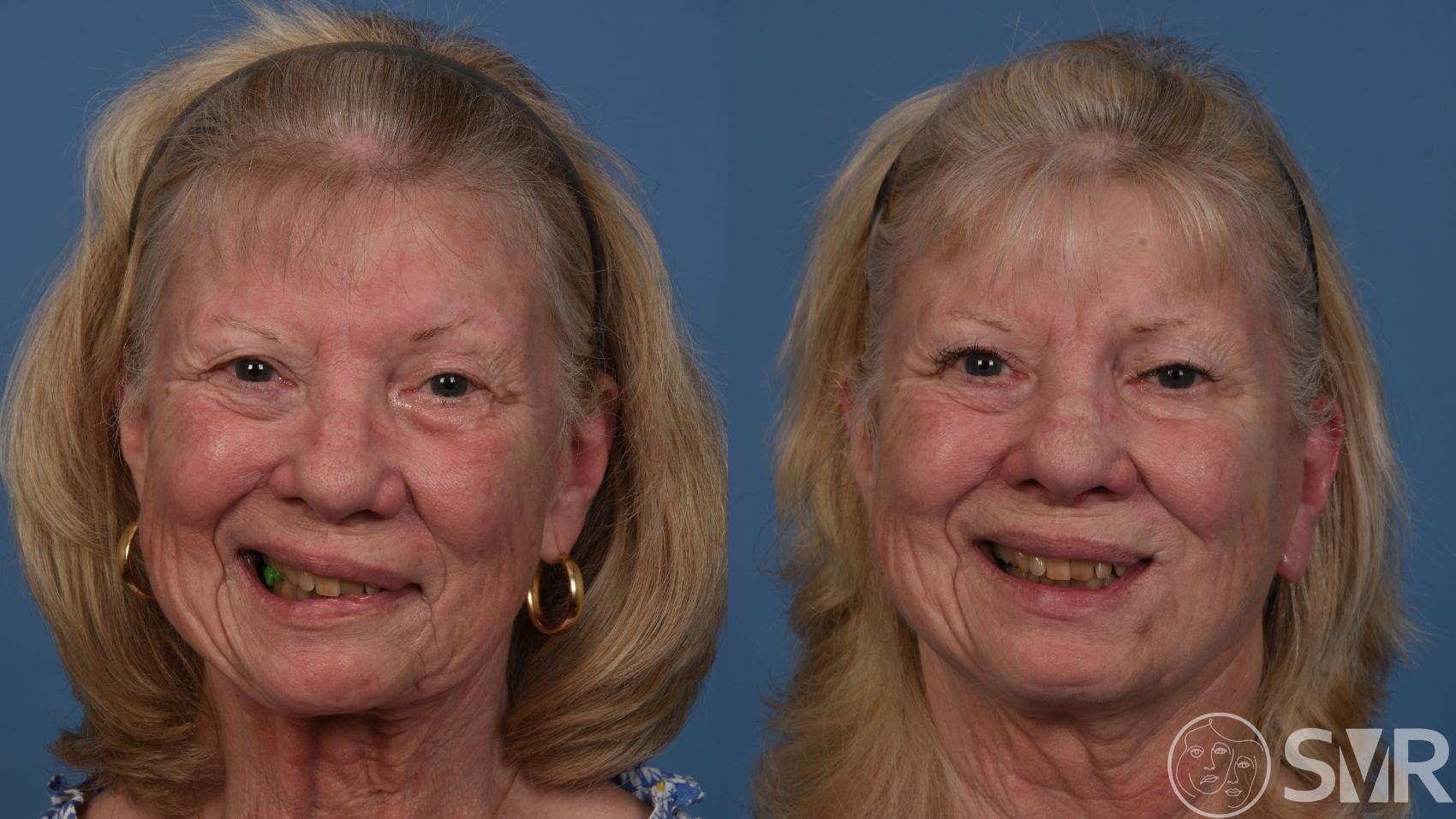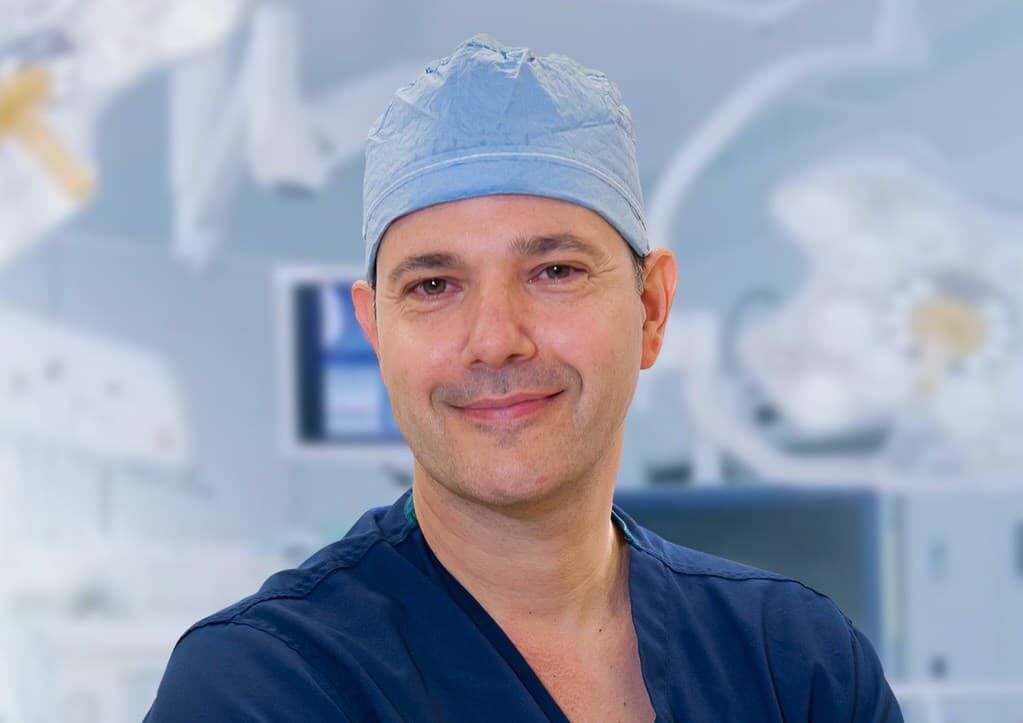Shai M. Rozen, M.D., F.A.C.S.
1801 Inwood Road
Dallas, TX 75390
Phone: (214) 645-2353
Monday–Friday: 8 a.m.–5 p.m.
Selective Neurectomies & Neurolysis
Synkinesis is a condition in which patients suffer from involuntary facial movements during voluntary facial expressions and in which certain facial areas suffer from excess power (hypertonicity) and others from weakness (hypotonicity). Synkinesis is usually caused by the abnormal recovery of the facial nerve after any type of facial nerve injury, including Bell’s palsy, tumor removal, trauma, or infection.
Selective neurectomy and neurolysis are some of the surgical techniques used to treat synkinesis and facial paralysis. Dr. Shai Rozen, a leader in the field of facial paralysis, along with leading neurotologists and neurosurgeons at the University of Texas Southwestern Medical Center have extensive experience in the treatment of synkinesis, restoring facial function, appearance, and balance for their patients from across the U.S. and around the globe. During your visitation, you will be assessed whether selective neurectomies have a role in your personalized treatment strategy aiming to restore facial function, harmony, and normalcy.
What is selective neurectomy?
Selective neurectomies involve cutting certain facial nerve branches that might be contributing to the uncoordinated motion and excess tone of the face with the hope of diminishing these abnormalities and improving the overall motion and tone in the face. It is key that whenever a nerve is cut, there is another nerve that performs the same activity. An experienced facial palsy surgeon will “map” the facial nerve prior to cutting any facial nerve to avoid creating paralysis.
What is selective neurolysis?
Selective neurolysis refers to freeing a nerve from any external compression in an attempt to restore some of its function. These procedures are mainly performed to treat congenital (at birth) facial paralysis but can also be used in treating synkinesis. The thought on how neurolysis might work is a bit different for each condition.
- Congenital paralysis: Neurolysis is performed to decompress the nerves with the goal of increasing their activity/power. The nerves should have some clinical or electrophysiologic evidence of activity before performing neurolysis.
- Synkinesis: Neurolysis is performed to decrease the communication between facial nerve branches and thus decrease uncoordinated motion. In effect, it is performing neurectomies of small communicating branches.
Do either selective neurectomies or selective neurolysis work?
The answer is not straightforward. If either is done without any additional procedures, the benefits are sometimes limited in both effect and duration. Selective neurectomies are procedures that have been performed for more than 40 years and are not a new concept. The main issue is a recurrence of synkinesis and sometimes in order to improve outcomes a myectomy (cutting of a muscle) is added. When combined with different degrees of intervention, based on the severity of synkinesis, these procedures can be an effective tool for many. After an evaluation, Dr. Rozen should be able to discuss this strategy in depth with the patient.
Dr. Shai Rozen
Dr. Rozen is a board-certified plastic surgeon who co-created a facial paralysis specialty group with colleagues from otolaryngology & neurosurgery at the University of Texas Southwestern Medical Center.
Meet Dr. Rozen
How do you decide which nerves to cut?
Each patient is different, and the severity of synkinesis varies. Often, selective neurectomies are not needed, so only myectomies (cutting of muscles) are performed. During the pre-operative examination before a neurectomy, Dr. Rozen determines which parts of the face suffer most significantly from the synkinesis. During the surgery, he examines the different branches of the facial nerve and understands what they do to the face when stimulated with a special nerve stimulator. Once the nerves are identified, Dr. Rozen determines if there are additional nerves that can perform the action of the nerve he plans to cut. Once redundancy is established, meaning that more than one branch performs the same activity, he can safely cut the branches of the nerve without risking paralysis.
Will selective neurectomies help me with my smile?
Usually, when performed alone without the addition of selective myectomies (cutting of muscle), neurectomies do not provide a big difference in a patient’s smile. What selective neurectomies may do is decrease excessive tone. Patients will often report less pain and hypertonicity in the face after the surgery, describing their face as “less tense.” When combined with selective myectomy, selective neurectomies can significantly improve the smile in many patients.
A Valuable Resource for Those Affected by Facial Paralysis
If you, a loved one, or a patient is affected by facial paralysis, it’s crucial to have accurate, up-to-date information about symptoms and solutions. Board-certified plastic surgeon Dr. Shai Rozen, a specialist in facial paralysis and facial aesthetics, created Your Guide to Facial Paralysis & Bell’s Palsy to be a readily accessible resource for all.
This downloadable, printable e-book makes it easy to understand:
- How paralysis affects the face
- When it’s time to see a specialist
- Common causes of facial paralysis
- The difference between facial paralysis and Bell’s palsy
- Myths and facts
- The latest treatment options
- Answers to common questions
Get your free copy today—to download or view in your web browser—by completing the following fields:

Will selective neurectomies help me with my eye on the synkinetic side that seems smaller and often twitches when I eat?
Some patients will report a “calmer” eye, in other words, a more relaxed eye that tends to spasm less and look more symmetric. Others report less contraction of the eye when they are eating. With this said, neurectomies alone do not completely eliminate the increased contraction of the eye. Even though it may seem so initially, nearly all patients have some degree of recurrence.
To completely eliminate contraction, muscles need to be removed in addition to nerves resulting in paralysis of the muscles around the eye. This is not an approach we take other than in extreme cases of synkinesis when patients cannot open their eyes.
For the reasons above, most patients will need a very small amount of BOTOX® injected around the eye, which provides a great deal of relief. These BOTOX injections are covered by medical insurance in nearly every case.
What should patients expect after selective neurectomies?
In most cases, selective neurectomies are performed as an adjunct procedure, most commonly with a myectomy (cutting of a muscle or less commonly a group of muscles). Well-hidden incisions are placed in front of the ears and possibly extend a bit towards the neck, depending on what is done in surgery. Incisions may also be placed behind the chin if certain additional procedures such as nerve transfers or myectomies are performed.
Patients usually go home the day of surgery or the morning after and may shower 48 hours after the surgery. Pain is not very common after surgery, but pain medications are provided for use as needed. Antibiotics are provided for a few days. Follow-up in the clinic is usually 1 to 2 weeks after surgery.
Next Steps
If you or a loved one is affected by synkinesis after Bell’s palsy or other causes of facial paralysis, Dr. Rozen and his team are ready to help with genuine compassion and the latest treatments available while continuing to innovate the field. Request a consultation to meet with Dr. Rozen at UT Southwestern Medical Center.








